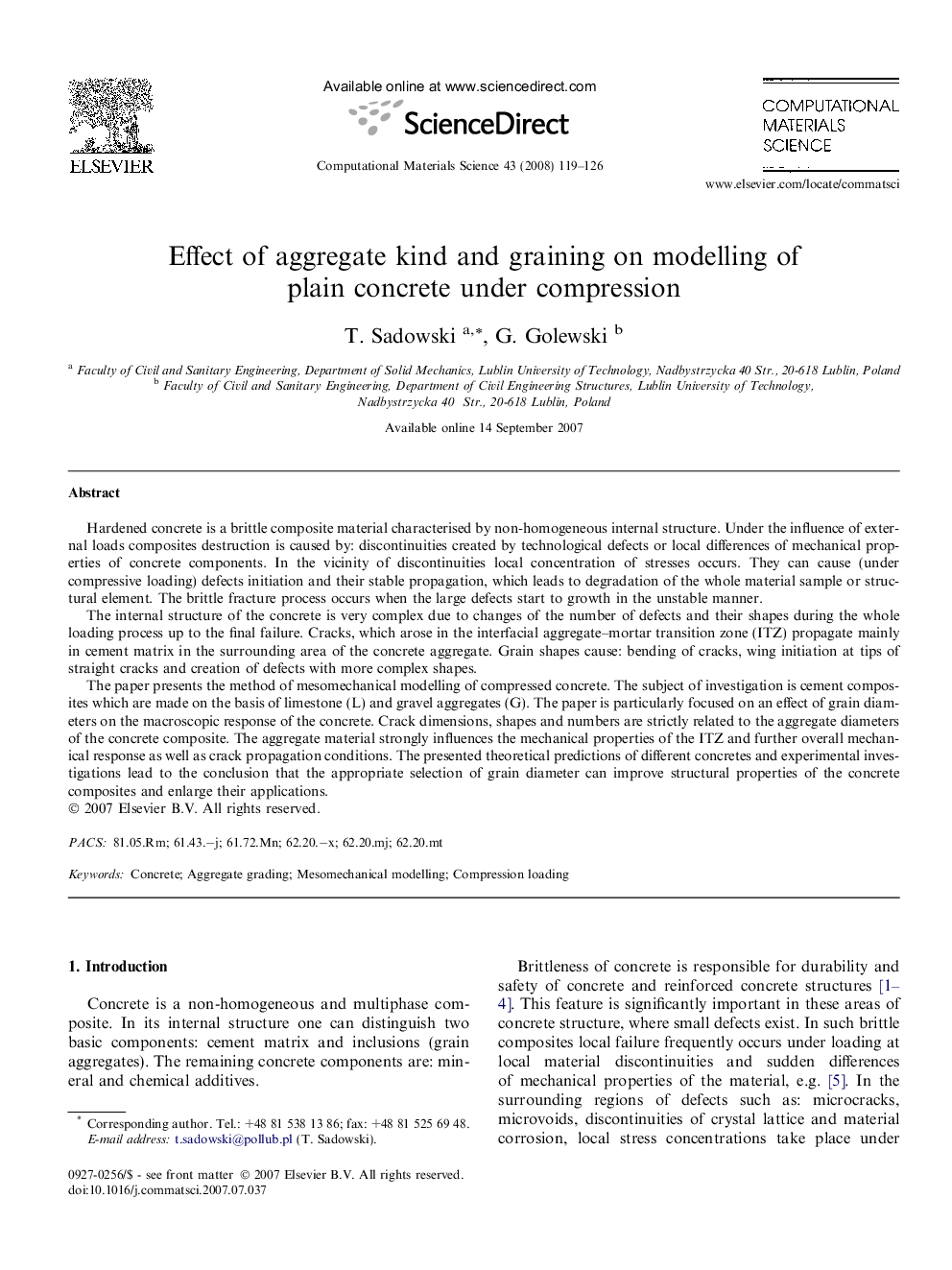| Article ID | Journal | Published Year | Pages | File Type |
|---|---|---|---|---|
| 1563855 | Computational Materials Science | 2008 | 8 Pages |
Hardened concrete is a brittle composite material characterised by non-homogeneous internal structure. Under the influence of external loads composites destruction is caused by: discontinuities created by technological defects or local differences of mechanical properties of concrete components. In the vicinity of discontinuities local concentration of stresses occurs. They can cause (under compressive loading) defects initiation and their stable propagation, which leads to degradation of the whole material sample or structural element. The brittle fracture process occurs when the large defects start to growth in the unstable manner.The internal structure of the concrete is very complex due to changes of the number of defects and their shapes during the whole loading process up to the final failure. Cracks, which arose in the interfacial aggregate–mortar transition zone (ITZ) propagate mainly in cement matrix in the surrounding area of the concrete aggregate. Grain shapes cause: bending of cracks, wing initiation at tips of straight cracks and creation of defects with more complex shapes.The paper presents the method of mesomechanical modelling of compressed concrete. The subject of investigation is cement composites which are made on the basis of limestone (L) and gravel aggregates (G). The paper is particularly focused on an effect of grain diameters on the macroscopic response of the concrete. Crack dimensions, shapes and numbers are strictly related to the aggregate diameters of the concrete composite. The aggregate material strongly influences the mechanical properties of the ITZ and further overall mechanical response as well as crack propagation conditions. The presented theoretical predictions of different concretes and experimental investigations lead to the conclusion that the appropriate selection of grain diameter can improve structural properties of the concrete composites and enlarge their applications.
